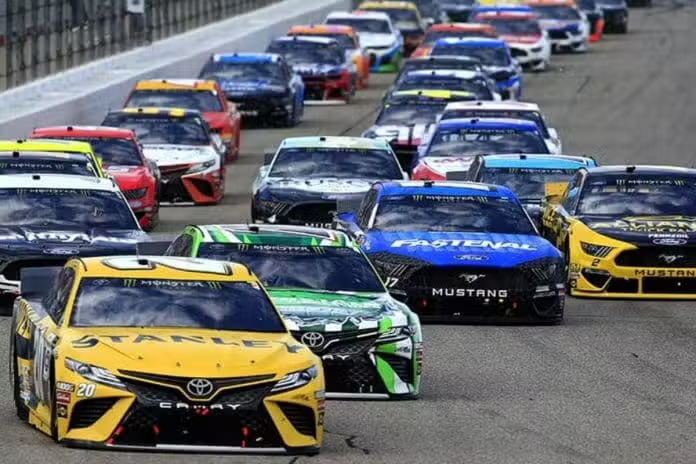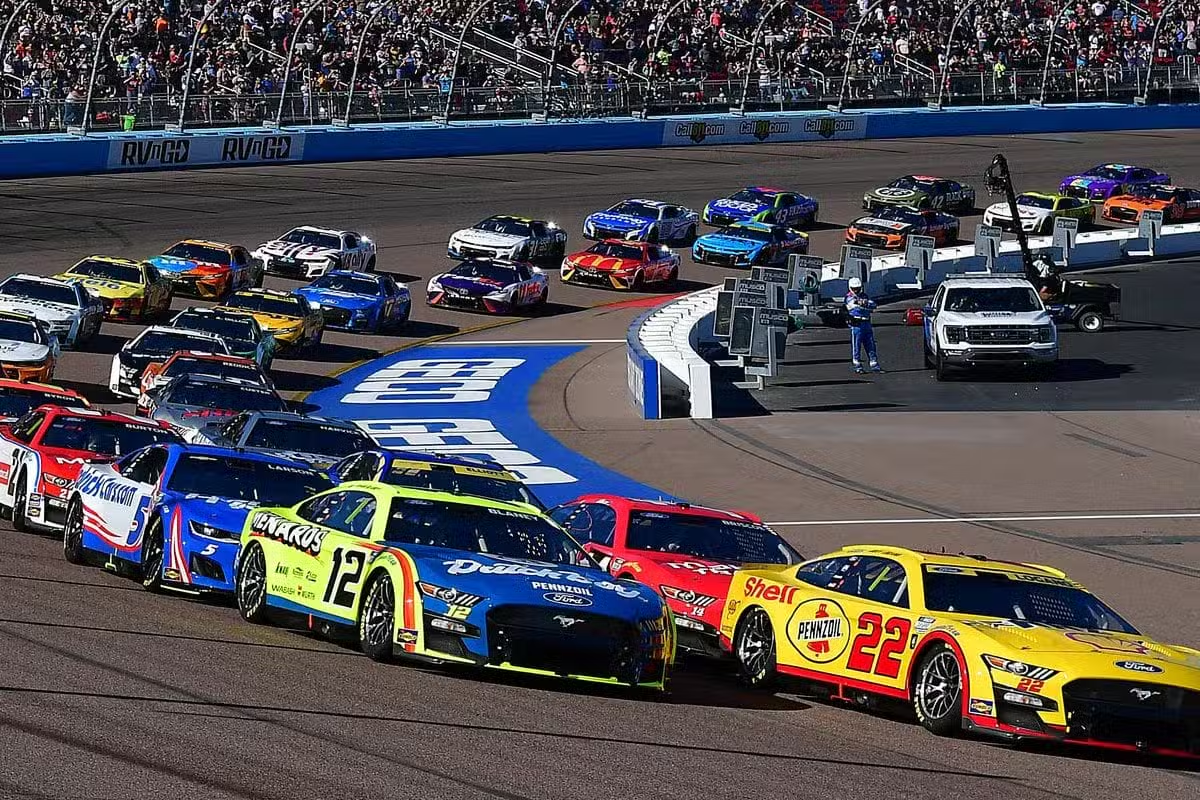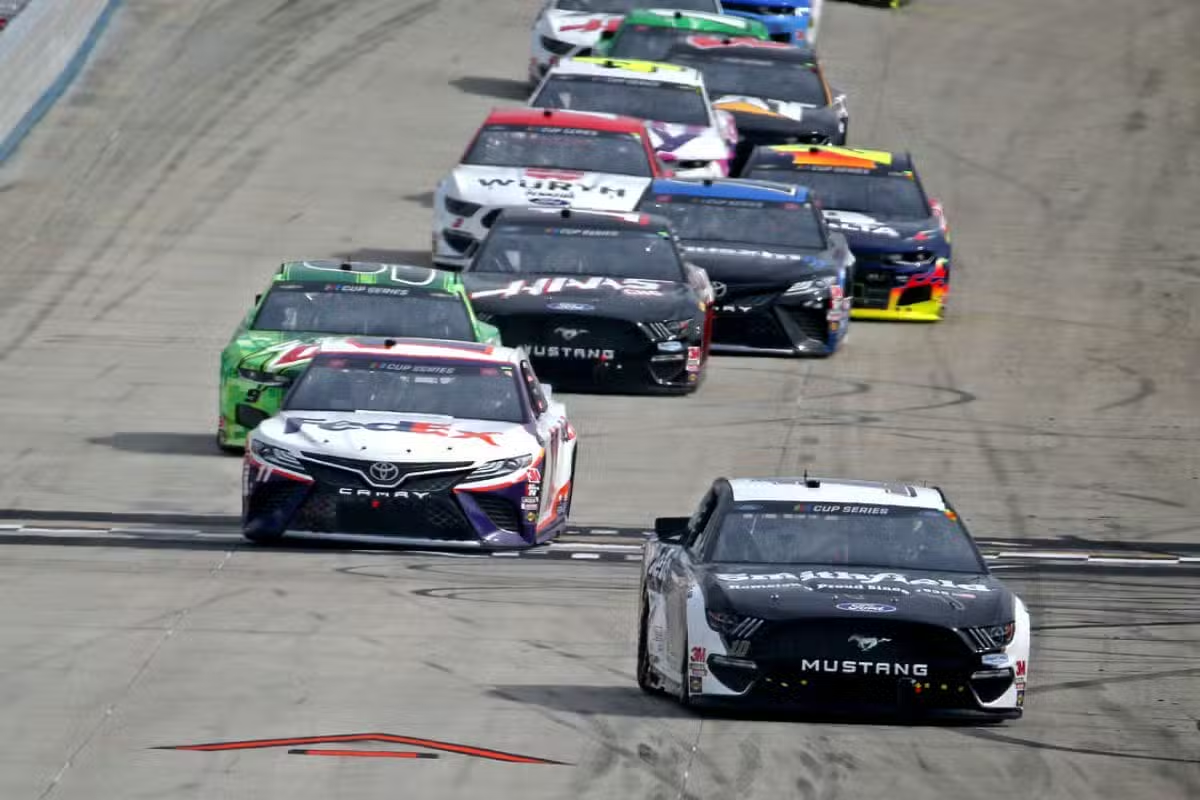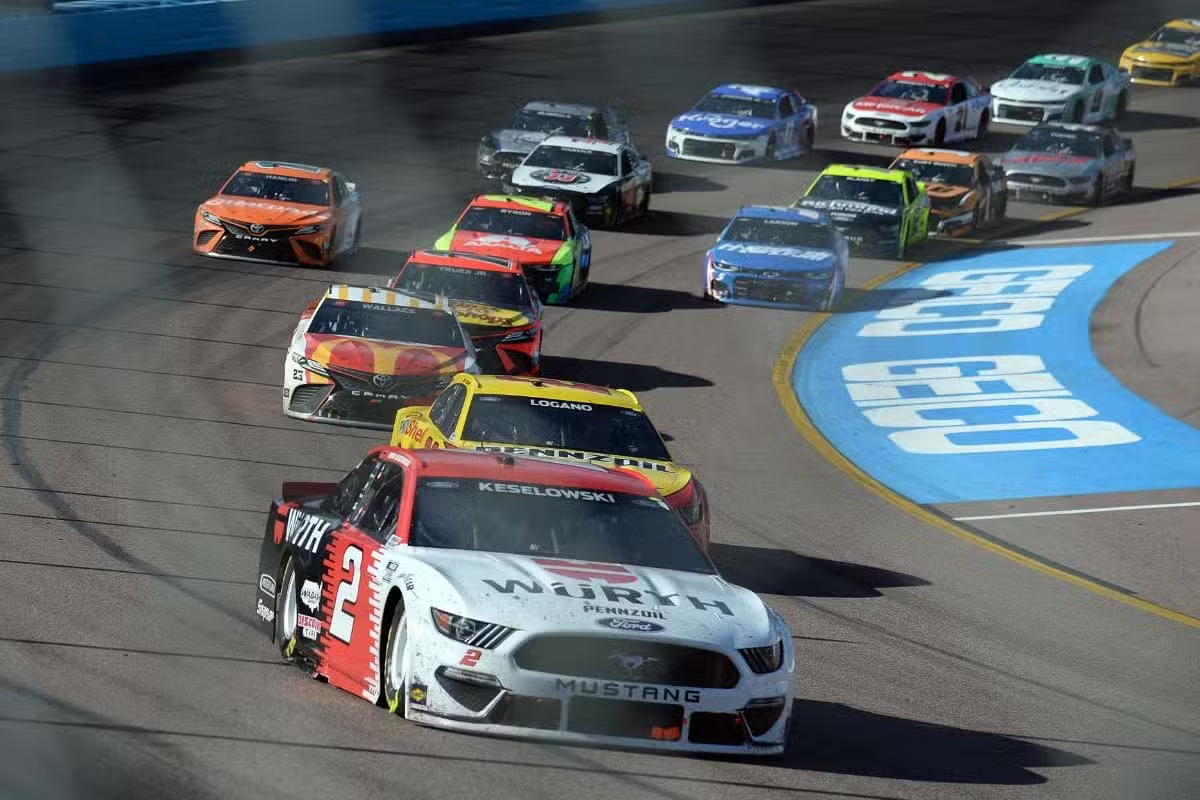NASCAR Walmart Sign Incident: The recent uproar among NASCAR insiders regarding the Walmart sign incident has shown notable flaws in the sport’s safety protocols and operational readiness. Prominent voices like Jeff Gluck and Jordan Bianchi have raised concerns about the implications of such oversights, particularly the unforeseen impact on race dynamics and driver safety. This incident disrupted the event and reignited a broader conversation about the integrity of NASCAR’s standards. As the dust settles, the question remains: what measures will be taken to prevent similar occurrences in the future, and how will this shape the sport moving forward?
Key Highlights
- NASCAR insiders express significant frustration over safety protocols following the Walmart sign incident, questioning the effectiveness of current measures.
- Jeff Gluck criticizes the lack of secure signage and calls for regular inspections to ensure track safety.
- Jordan Bianchi supports Gluck’s views, suggesting simple solutions like using zip ties to prevent loose signage hazards.
- The unexpected caution during the race altered competitive dynamics, benefiting Joey Logano while frustrating other drivers.
- The incident has prompted increased scrutiny of NASCAR’s safety standards and raised concerns about driver morale and fan safety perceptions.
Insiders’ Reaction to the Walmart Sign Incident
The unexpected disruption caused by the fallen Walmart sign at Atlanta Motor Speedway has sparked considerable discontent among NASCAR insiders, highlighting a significant issue of safety and preparedness in the sport. The incident occurred during a crucial playoff race, leading to heightened frustrations voiced by notable figures such as Jeff Gluck and Jordan Bianchi. Their reactions emphasize a broader concern regarding the integrity of race conditions and the potential ramifications on championship outcomes.
Gluck expressed his outrage on The Teardown podcast, indicating that the climax of a season—particularly within the narrow confines of a three-race playoff—demands meticulous attention to detail concerning track safety. He articulated a belief that any external factors, such as a falling sign, should be entirely mitigated in order to preserve the authenticity of competition.
“What makes me irrationally angry today is this sign because to me if you’re going to have your entire season come down to these little three-race mini playoffs and the one-race championship, every single little thing from the track standpoint has got to be buttoned up.” – Gluck
The recurrence of such incidents, including a similar occurrence at The Roval in 2022, raises alarming questions about the efficacy of safety protocols at NASCAR events.
“You cannot have a situation where a sign for whatever reason is even possibly gonna fall on the track. This is the second time in three years this has happened. 2022 at The Roval in an elimination race, there was a caution called for a sign on the track and that changed the outcome of the playoffs for that year.” – Gluck
Bianchi echoed these sentiments, stressing that the stakes are too high for lapses in safety measures to impact race results. The fallout from the Walmart sign incident not only disrupts the flow of the race but also calls into question the organizational preparations that underpin the sport.
As NASCAR continues to evolve, the responses from insiders reveal an urgent need for a reassessment of safety standards to guarantee that the integrity of racing remains uncompromised, safeguarding both participants and the tenets of competitive fairness.
Gluck’s Criticism of Track Safety Measures
Amidst the chaos of the Walmart sign incident, Jeff Gluck’s critique of track safety measures has gained considerable traction within the NASCAR community. His comments highlight a critical issue regarding the integrity of race environments and the potential ramifications of insufficient safety protocols.
Gluck’s remarks emphasize an urgent need for NASCAR to reevaluate its approach to cues placement, as it could inadvertently influence race outcomes.
“Things happen, but if you’re going to put signage where race cars are driving by so fast that some people have fooled themselves into think there’s a vortex theory that it can control the weather, then you better have the signage locked down and secure. NASCAR cannot have something like that changing the outcome of a playoff race or the playoffs.” – Gluck
To stress the gravity of the situation, Gluck outlined several key considerations that NASCAR must address:
- Secure Signage: All signage in proximity to high-speed racing zones should be firmly anchored and regularly inspected to prevent any potential hazards.
- Risk Assessment Protocols: NASCAR should implement thorough risk assessments for all track elements, guaranteeing that any item that could interfere with race cars is evaluated for safety.
- Enhanced Communication: Establishing a clear line of communication between track officials and teams can facilitate timely responses to emerging safety concerns.
- Regulatory Review: A thorough review of current regulations governing track safety measures is crucial to uphold the integrity of the sport.
As NASCAR endeavors to maintain its reputation and protect its competitors, it must take decisive action to guarantee that incidents like the Walmart sign controversy do not compromise the sanctity of the sport.
Bianchi’s Perspective on the Walmart Sign Incident
In view of the recent Walmart sign incident, Bianchi has voiced strong agreement with Gluck’s concerns regarding track safety protocols. He emphasizes the critical need for stringent safety measures, particularly in high-speed environments where the risks are magnified.
Bianchi suggests a pragmatic solution: NASCAR should utilize zip ties to secure the sign, a readily available item given Walmart’s inventory. This straightforward approach highlights the importance of proactive measures to prevent hazards that could have severe consequences for drivers.
“It just can’t happen and especially on a track like this. Road course, it’s a little bit more forgivable because they set them up on the side of the course and everything like that.” – Bianchi
Bianchi articulates the inherent dangers associated with loose signage, particularly on traditional tracks where speeds can be exceptionally high. “The problem is here that the speed you’re going, if that falls and catches somebody on the windshield, you can’t see,” he explains, emphasizing the potentially catastrophic outcomes.
“The problem is here that the speed you’re going, if that falls and when it catches somebody on the windshield and it catches your vision, you can’t see. Or if it’s falling towards you and you’re like ‘What the hell is that thing coming towards me’ and you move. Here, the consequences could be dire. It’s a little more forgivable on road course by not so much here at the speeds and the style of track that this is. You cannot have that happen.” – Bianchi
The sudden appearance of an object in a driver’s line of sight—not to mention the instinctive reactions that could ensue—creates a volatile scenario that could lead to serious accidents.
Furthermore, Bianchi contrasts this incident with scenarios on road courses, where the setup allows for a more forgiving safety environment. He stresses that while some leniency may exist in those contexts, the unique conditions of oval tracks necessitate an uncompromising commitment to safety.
Bianchi’s perspective serves as a clarion call for NASCAR to reevaluate its safety protocols, ensuring that such incidents are not merely addressed reactively but are prevented through diligent and preemptive measures.
Incident Impact on the Race
With safety concerns brought to attention by Bianchi, the implications of the Walmart sign incident on the race itself cannot be overlooked. The incident, occurring with just ten laps remaining in the Quaker State 400 at Atlanta, markedly altered the competitive landscape and highlighted the fragility of race dynamics.
Daniel Suárez and Ty Gibbs were embroiled in a fierce battle for the lead when the caution was triggered, ultimately reshaping the outcome of the race.
The fallout from this incident can be summarized as follows:
- Caution Disruption: The unanticipated caution interrupted the momentum of those vying for the lead, disrupting the tactical flow of the race.
- Tactical Restart: The restart gave Joey Logano, who had been positioned behind the leaders, a crucial opportunity to capitalize on the chaos, allowing him to secure victory.
- Driver Frustration: Both Suárez and Gibbs expressed frustration, as the incident took away their chance to compete for the win under normal racing conditions.
- Regulatory Scrutiny: The NASCAR governing body faces increased scrutiny over the safety protocols surrounding trackside signage, raising questions about future incidents and their management.
News in Brief: NASCAR Walmart Sign Incident
The recent incident involving a loose Walmart sign during a NASCAR race has emphasized notable deficiencies in safety protocols and preparedness within the organization. The criticisms from insiders such as Jeff Gluck and Jordan Bianchi highlight the urgent need for improved measures to secure signage and improve communication between track officials and teams. As discussions about race integrity and safety standards intensify, it becomes imperative for NASCAR to address these concerns to maintain the sport’s credibility and guarantee participant safety.
ALSO READ: NASCAR’s Million-Dollar Strategy: How Teams Are Torn Between Profit and Driver Welfare





